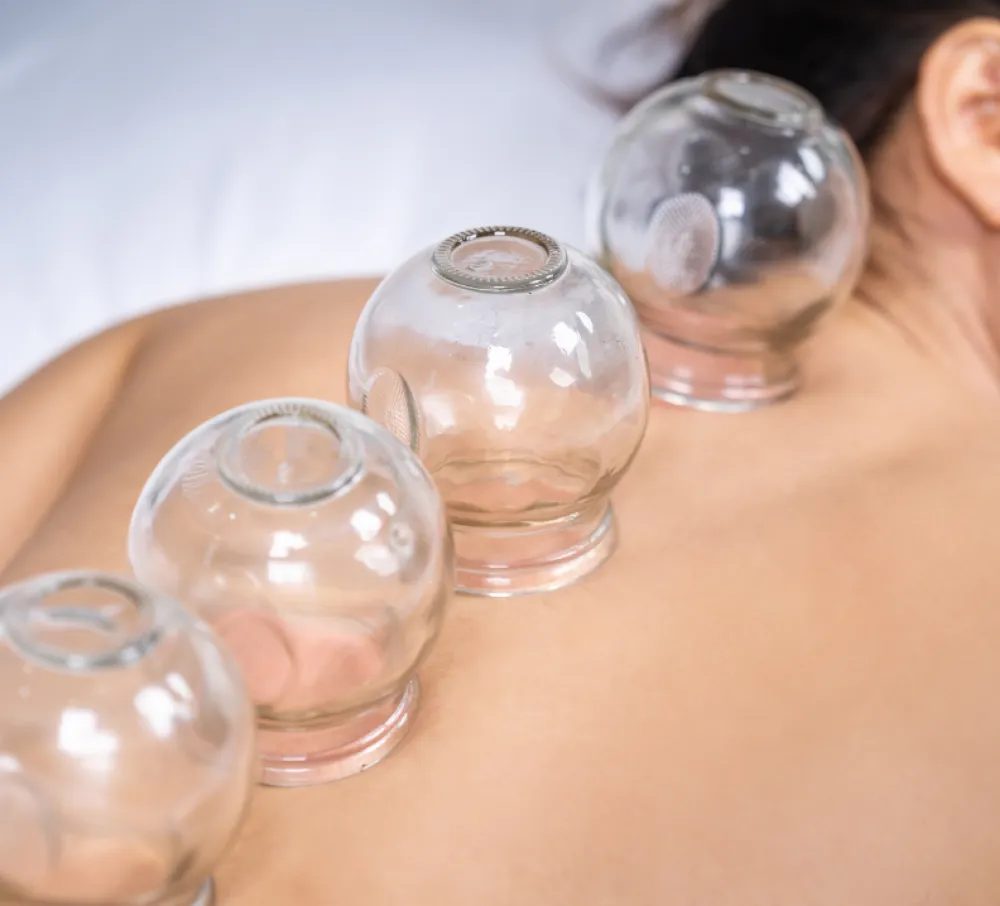by Sandy Kerry, Registered Acupuncturist (RAc)
Sore, stiff neck and shoulders, frequent headaches and migraines, long work hours and high stress are some of the most common complaints from those who are looking for relief with acupuncture, cupping or tuina (Chinese massage).
The reasons vary from sitting for lengthy periods without a break, using incorrect equipment such as a desk that is too high or low, and using a chair that doesn’t support the back properly, leading to poor posture and neck and head strain and headaches and migraines, lack of exercise or stretching leading to tight muscles and tendons, over-stretching leading to muscle or tendon injury, poor diet leading to weight gain or loss and therefore excess or deficiency, and stress.
In Traditional Chinese Medicine, it is said that blood is the mother of qi, and qi is the commander of blood. In other words, what moves blood is energy or qi; however, if there is not enough qi or if there is something that is blocking qi, then blood is unable to move as well as it should.
The liver is the organ that is responsible for moving qi in the body but is also responsible for boundary setting. The solid organs of the body, such as the liver, heart, spleen, lungs, and kidney, store emotions, whereas the hollow organs, such as the gall bladder, small intestine, stomach, large intestine, and urinary bladder, excrete.
The liver stores anger and frustration, which, in excess, slows or stagnates qi, resulting in many conditions such as menstrual pain, fibroids, cysts, headaches, migraines, redness in the face and eyes, dizziness, and dry mouth.
Since stress or emotions, injuries, and poor posture can slow qi, especially when in excess, it is important to have the proper amount and quality of sleep (going to bed at the right time, having the right type of bedding and getting enough sleep), have the right diet (good quality food, eating at the right times, eating the right amount of food), do the proper amount and type of exercise and stretching, and meditate and have the right mindset. These are all methods that can help to move and balance qi leading to relaxed tendons and muscles and less pain in the body overall.
Acupuncture works by identifying the channel that is sick. All channels in the body lead to the channel’s associated organ. Along the channel, there are specific points where energy pools. By palpating the channel and identifying the area with the most sensitivity, it is possible to treat the channel and, therefore, the associated organ using sterilized, disposable fine needles which can stimulate the channel, the organ and the central nervous system, tuina massage, fire cupping, guasha (stone tool) or moxibustion (burning mugwort leaves in order to warm/heat an area of the body).
Diagnosis of a patient can be determined through identifying the patient’s chief complaint, observing the patient, palpation of the area in question, range of motion testing, asking questions, observing the tongue, and taking the pulse. The diagnosis could be either an excess or deficient condition. In the case of someone with shoulder and neck pain the diagnosis would likely be “qi stagnation” or “blood stasis”.
The insertion of needles in specific locations, such as the shoulder or neck, will help to move the qi and clear stagnation, which is the treatment principle in a case of qi stagnation or blood stasis.
In the case of someone with shoulder and neck pain, fire cupping or tuina (massage) or guasha (stone tool massage) are other useful methods that can be used to move the qi and break up stagnation.
A suction is created when a cotton ball is dipped in 99% alcohol and, lit on fire and then inserted into a glass cup. The cup is then quickly placed on the body. If done quickly enough, a suction is created, which helps to alleviate stagnation by bringing the blood to the surface of the skin, and once the cup has been released, the blood flows back to where it belongs, therefore alleviating qi stagnation or blood stasis. There are three methods of fire cupping: stationary, flash or moving cupping. The result of all three is better movement, less pain, and less stress.
With an accurate diagnosis, all forms of treatment can be applied to the right acupuncture channel or organ to bring relief and healing, whether the diagnosis is qi stagnation from stress, overwork, or any other ailment.
All ailments are approached from a Traditional Chinese Medicine perspective no matter what the issue, starting with eight principles: yin/yang, cold/hot, deficiency/excess or interior/exterior and identifying the channel/organ. In this way, it is possible to identify and treat the root of all conditions and the branches leading to quick and efficient results that are longer lasting depending on whether the issue is congenital or acquired.
Interested in learning more about Acupuncture, its benefits, and how Sandy can help?
Sandy Kerry is a registered Acupuncturist, Tuina Therapist, Medical Qigong Therapist, and Daoist Priest at Crossroads Naturopathic Clinic. She can combine different therapeutic styles to address numerous ailments.
Read Sandy’s full bio and book a consultation with her here.
Disclaimer: The information in this blog post is for educational and informational purposes only and is not intended as medical advice. It should not be used to diagnose, treat, or prevent any health issue or disease without consulting with a qualified healthcare professional. The author of this blog and the website do not bear any responsibility for any actions taken based on the information provided in this blog.


